8 of the Best Perennials to Plant in the Fall—These Stunning Flowers Will Return Year After Year
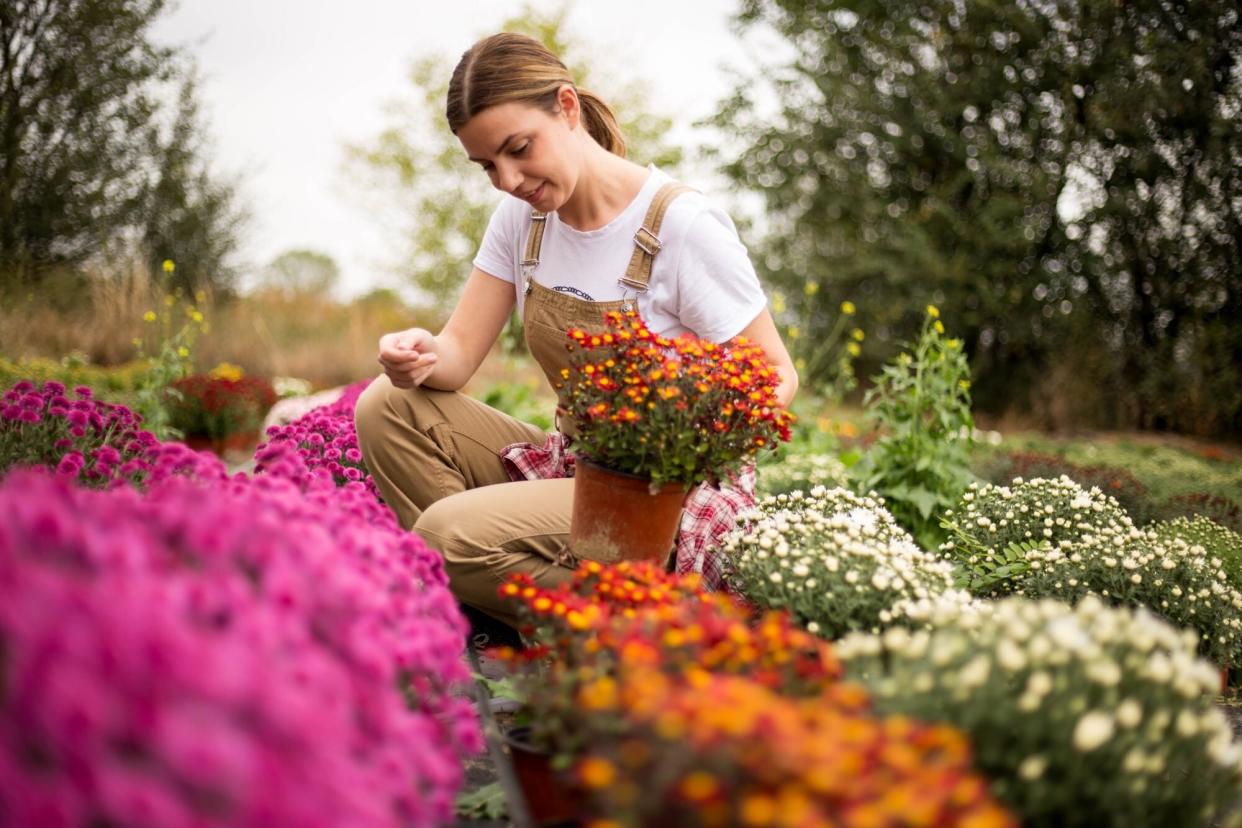
GETTY IMAGES
Whether you're hoping to improve the landscape of your flower garden now or plan in advance for the green oasis you'd like to see next year, perennials are an excellent choice to beautify your space—and many can be planted in the fall.
"Fall is an excellent time to plant almost any perennial, with the exception of many ornamental grasses, which are better planted in spring," says Erin Schanen, Troy-Bilt's gardening partner, a master gardener volunteer and creator of The Impatient Gardener blog and YouTube channel. Searching for some ideas for your own garden? Consider these expert-approved fall perennial picks.
Related: Exactly How to Start a Flower Garden, From Choosing Plants to Creating a Stunning Landscape
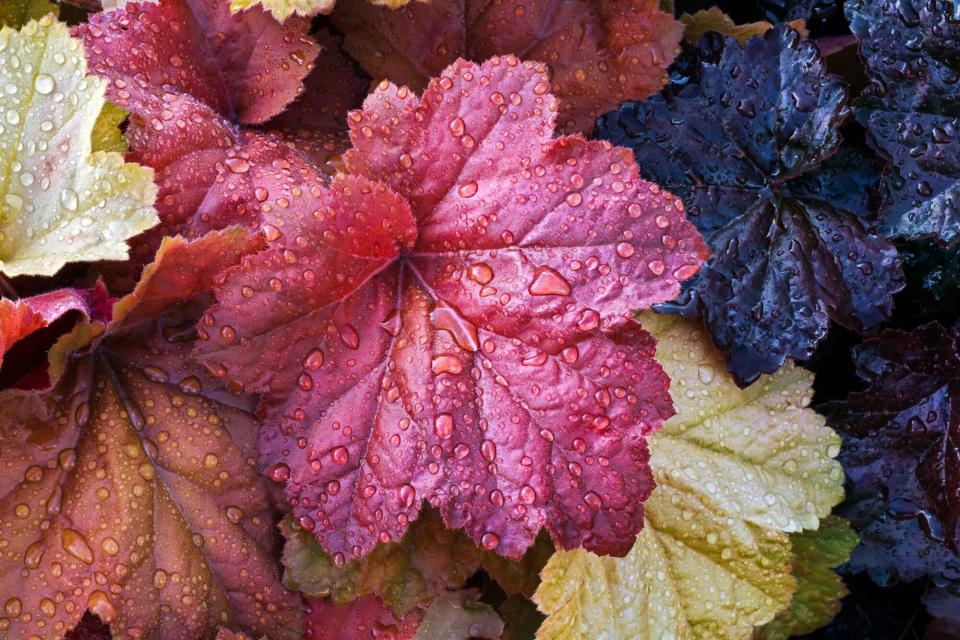
GETTY IMAGES
Heuchera
Heuchera, also known as coral bells, boasts colorful foliage and delicate flowers that bloom from late spring through summer; this fall-planted perennial will be the star of your flower garden's show, hands down. "With a range of colors from chartreuse to nearly black to pink, silver, and orange, heuchera is adds a shot of color to a garden or serves as a backdrop for a star plant," says Schanen.
When planted in the fall, heuchera plants grow in strong come spring, particularly in hardiness zones 5 through 7 with some varieties extending up to zone 9, according to the USDA Plant Hardiness Zone Map.
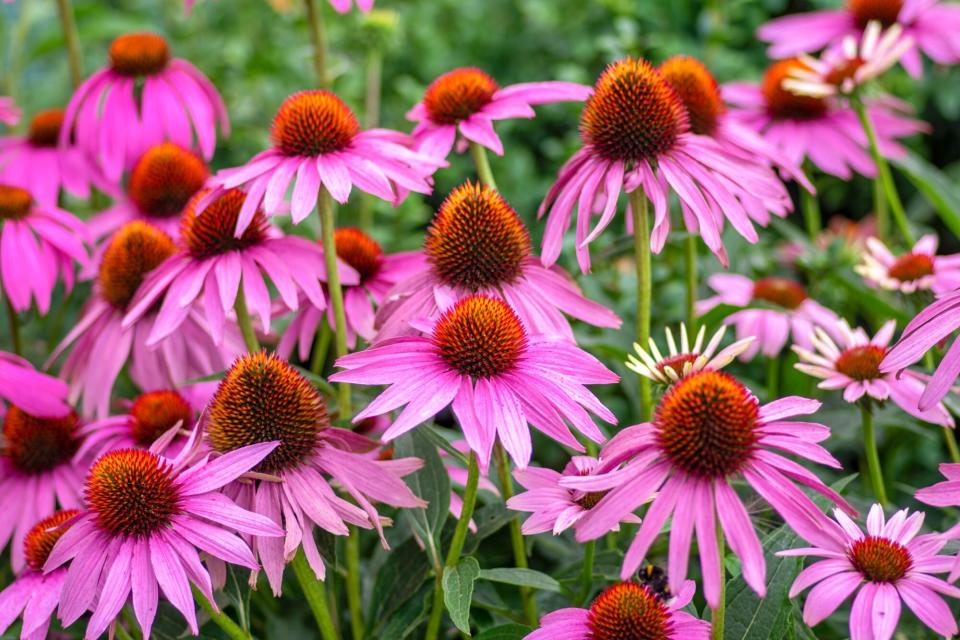
GETTY IMAGES
Echinacea
Teri Speight, a master gardener, writer, podcaster, blogger, and the author of Black Flora: Profiles of Inspiring Black Flower Farmers and Florists, suggests planting durable coneflowers, formally known as echinacea, in autumn. "Thriving in zones 3 to 9, these perennials add beauty to the garden when in bloom over the summer months," she says. "In the fall, I leave the seed heads so they can drop and provide new seedlings, unless they are eaten by the birds over the winter."
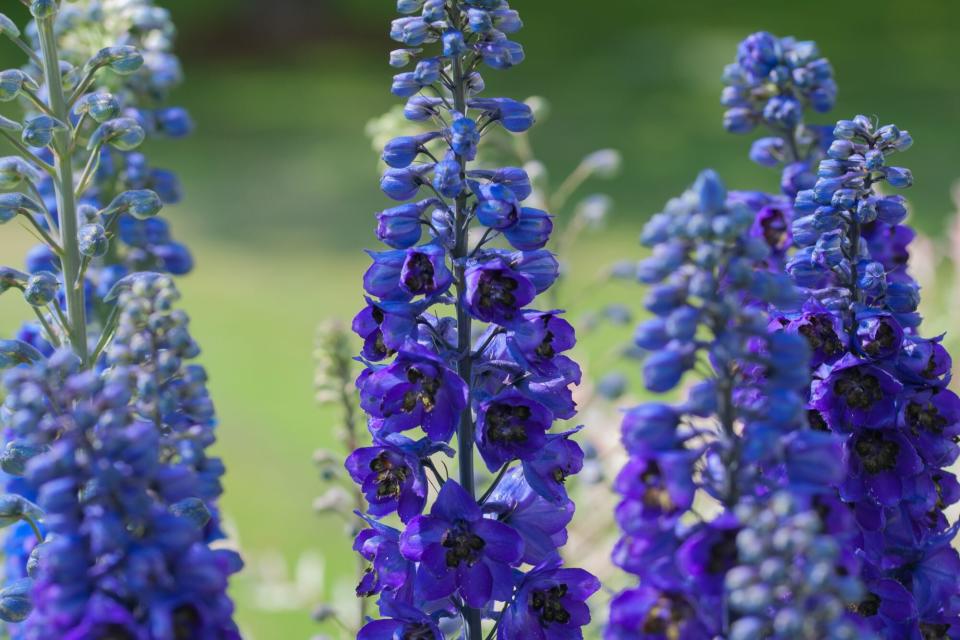
GETTY IMAGES
Aconitum
"Aconitum, also known as monkshood or wolf's bane, is a late-flowering cousin to delphinium, putting up deep blue to purple spires of flowers that stand out amongst a fall landscape of orange and yellow foliage," says Schanen.
Since aconitum typically blooms later in the year, Schanen explains that the flowers could begin to bloom almost immediately if they are planted in the fall. This variety grows in direct sun, but can handle indirect or partial light, as well. And when grown in hardiness zones 3 through 8, it can reach up to 3 feet in height. Note: Schanen warns that these flowers are poisonous, so she recommends planting them the middle of a garden bed.
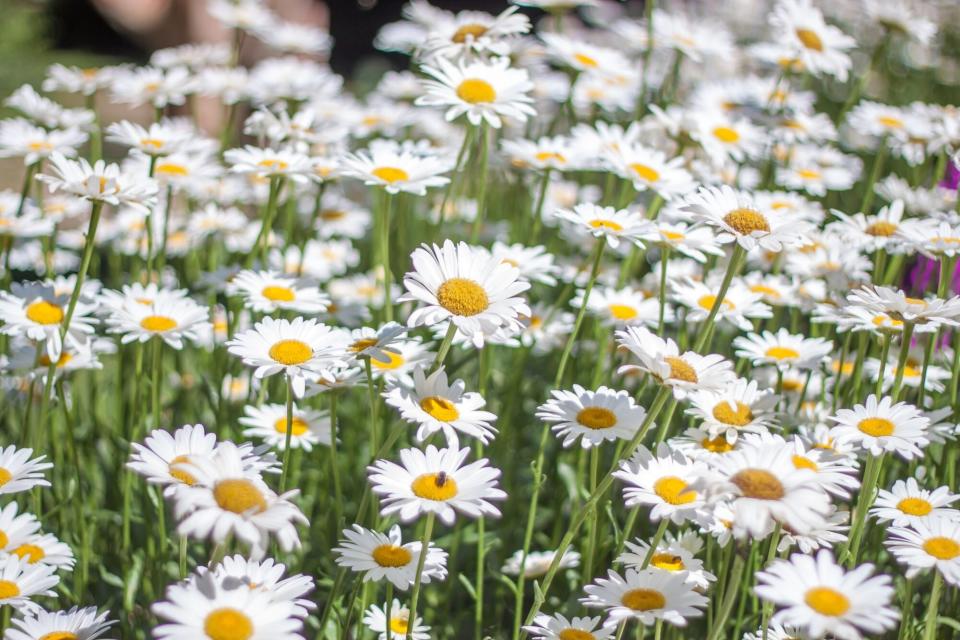
GETTY IMAGES
Shasta Daisies
Shasta daisies thrive in several zones, ranging from 5 to 9. When planted in the fall, the root of the flowers are able to develop deeply in the soil. Speight explains that when roots develop deep in the earth, the plant won't need as much water and can therefore withstand harsher conditions.
Related: Your Ultimate Guide to Flowering Perennials: Which Popular Plants Bloom When?
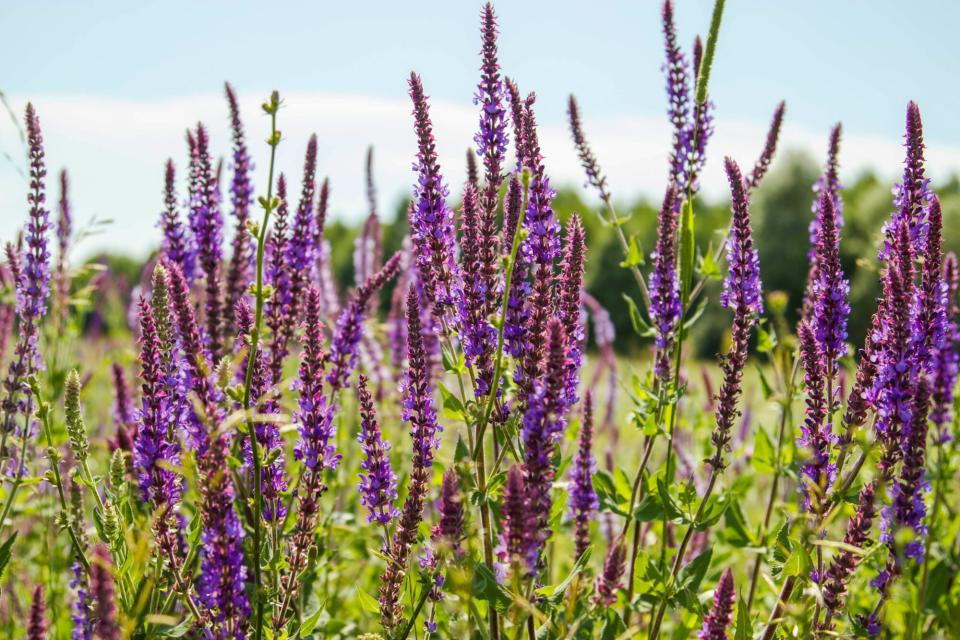
GETTY IMAGES
Perovska
If you want to bring beauty and pollinators to your garden, consider planting perovska, which is also referred to as Russian sage. It has a silvery foliage and blue-purple blooms when grown in hardiness zones 4 to 9. "When planted near evergreen shrubs, the gray stems add a touch of artistic whimsy to the landscape," says Speight. "In the springtime, the basal foliage often increases in size and can be divided or easily pruned."
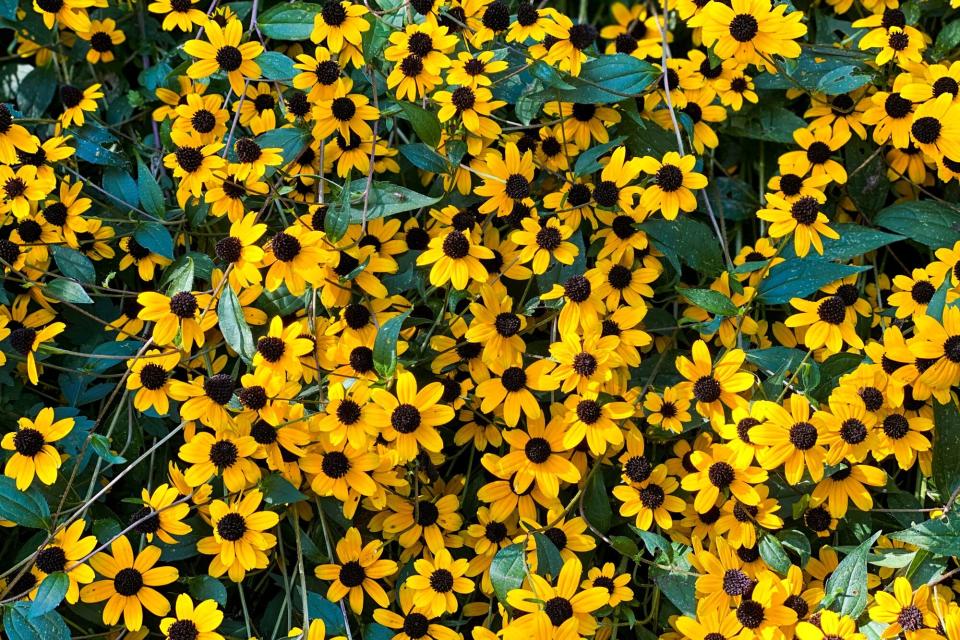
GETTY IMAGES
Rudbeckia
One perennial you can rely on to add beauty every autumn is the rudbeckia. This flower peaks during fall in hardiness zones 3 through 7, and can withstand inclement weather during the chillier seasons.
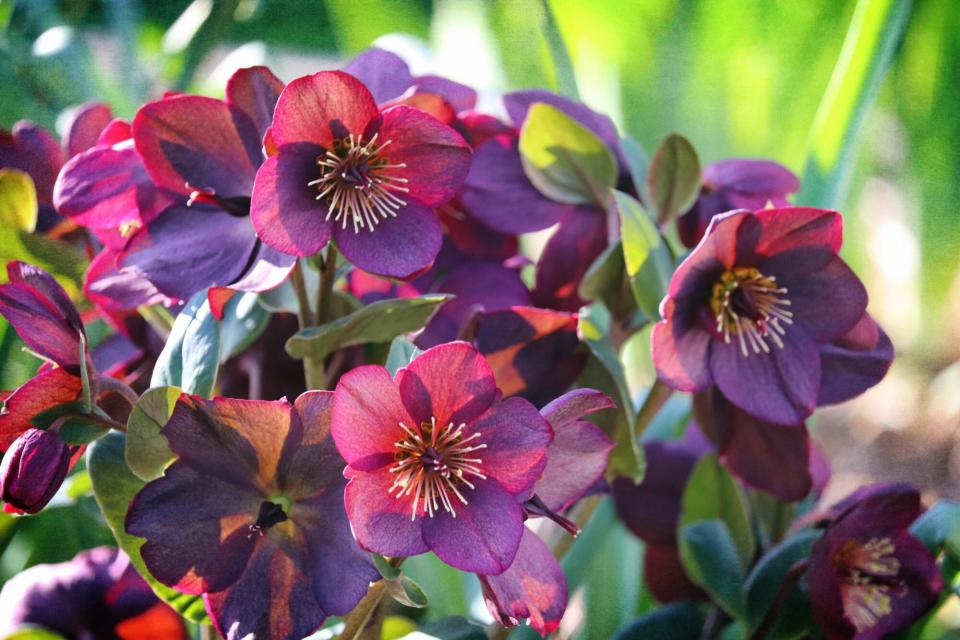
GETTY IMAGES
Helleborus
When planning out your spring flower garden, you'll want to keep helleborus in mind. Also known as the Lenten rose, Schanen says this perennial is one of the first to bloom each year, usually around February. "Different varieties offer blooms in a wide range of colors and shapes, with some that face up and others that dangle down, but all are delightful harbingers of the gardening season to come," she says. These plants are best grown in hardiness zones 3 through 9, and boast stunning evergreen foliage once fully grown.
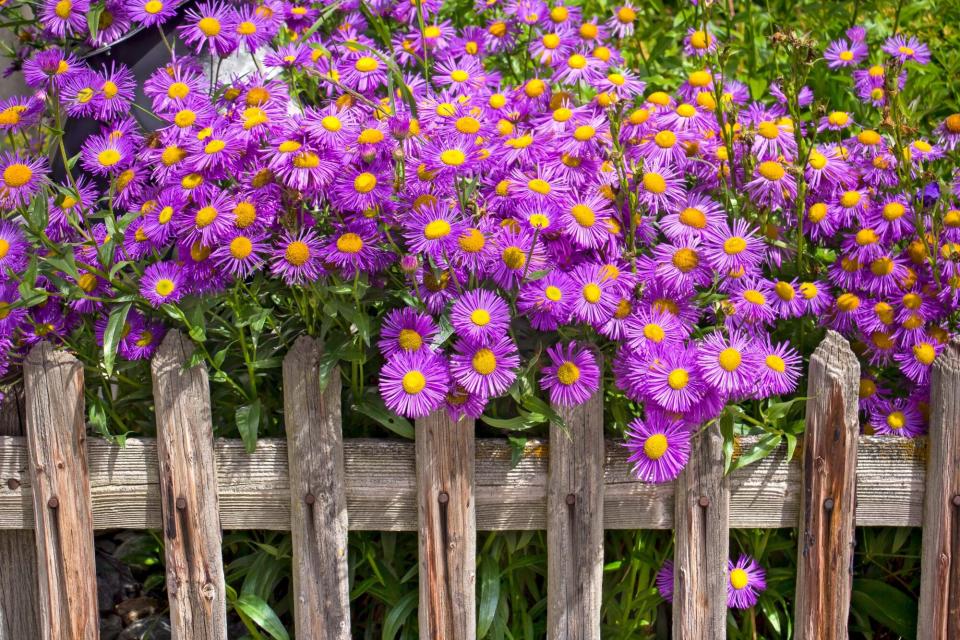
GETTY IMAGES
Asters
Asters are bright perennials to plant in the fall. "During this time of the year, swaths of miniature white, purple, and even blues sit atop the stems of this hardy plant," says Speight. "Purchasing these plants in the fall is a great time to choose the perfect color." Another perk? This variety can serve as a fall-time source of nectar for pollinators.
"Known for their long bloom time—especially in fall—the interest in this plant does not stop when it blooms," adds Speight. "The branches add artistic winter interest when snow falls adding value to the landscape in winter, as well as protection for beneficial insects overwintering in the garden." This plant thrives best in hardiness zones 3 to 8.

